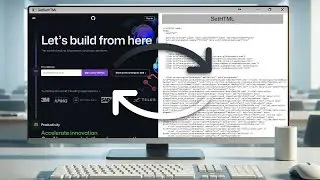Injecting a .NET Object into JavaScript Using DotNetBrowser 1.x
Today we are talking about Injecting a .NET Object into JavaScript Using DotNetBrowser
Get a free 30-days DotNetBrowser trial licence: https://www.teamdev.com/dotnetbrowser...
Previous tutorials:
How to get DotNetBrowser Evaluation Licence - • How to get DotNetBrowser Evaluation L...
How to Add a Browser Component to WPF Application - • How to Add a Browser Component to WPF...
How to Create HTML UI for WPF Application Using DotNetBrowser - • How to Create HTML UI for WPF Applica...
How to Add a Browser Component to a Windows Forms Application - • How to Add a Browser Component to a W...
Executing JavaScript from the .NET Side Using DotNetBrowser - • Executing JavaScript from the .NET Si...
About DotNetBrowser:
DotNetBrowser allows embedding a Chromium-based browser to your .NET app to display and process HTML5, CSS3, JavaScript, Flash etc.
For more ideas on using an advanced browser-component in your .NET application, please see examples on DotNetBrowser support site https://dotnetbrowser.support.teamdev...
Transсript:
00:07 Create and Configure a WPF Solution with DotNetBrowser
00:12 Create a WPF project. Then add the DotNetBrowser NuGet package and the valid licenсe file as an embedded resource
00:22 You can find detailed instructions in the previous tutorials. (Check out the links under this video)
00:24 Mark up the MainWindow
00:26 Add the Xml Namespace for the DotNetBrowser.Wpf library in the MainWindow.xaml
00:36 Create the WPFBrowserView component and define its name
00:42 Implement the MainWindow Behaviour
00:45 Define the public ‘DotNetObject’ class
00:49 Then define the public void ‘HandleMessage’ method with the ‘message’ argument
00:58 Inside this method begin invoking the ‘MessageBox.Show’ method using the CurrentDispatcher. The usage of the Current dispatcher is required because the JavaScript side calls injected objects from the non-UI thread
01:19 Now you need to create the ‘Browser.FinishLoadingFrameEvent’ handler
01:26 Inside the handler check that the loaded frame is the main frame
01:30 Then create the ‘JSValue jsWindow’ variable
01:35 And get the ‘window’ object from the JavaScript side using the ‘Browser.ExecuteJavascriptAndReturnValue’ method
01:42 Inject the new instance of the ‘DotNetObject’ class using the ‘JsObject.SetProperty’ method
01:55 After subscribing to the ‘FinishLoadingFrameEvent’ , call the ‘Browser.LoadURL’ method with the path to the html file which will be created in the next step
02:13 Create an HTML File
02:17 Add a new html file to the solution and call it “index.html”
02:23 Change the “Copy to Output Directory” property value to “copy always”
02:28 Add the text input with the “textbox” ID value
02:36 Add a button and call the ‘CallDotNet’ function in the onclick handler
02:45 Add the script section
02:53 Define the ‘CallDotNet’ function
02:56 Get the text from the ‘textbox’ element
03:07 And then call the ‘window.DotNetObject.HandleMessage()’ method
03:13 The name of the window property we’re calling corresponds to the name of the registered .NET object
03:18 Build and Launch
#.NET
#JavaScript
#DotNetBrowser
#EmbeddedBrowsers



















